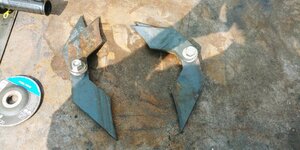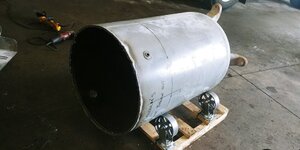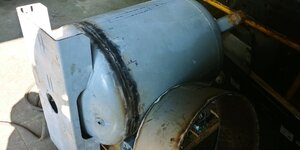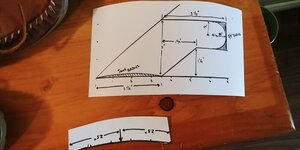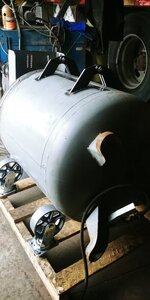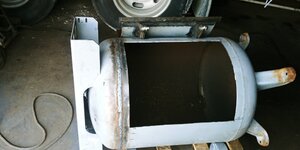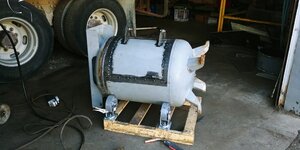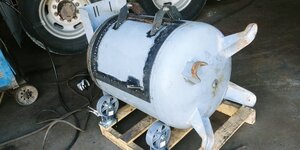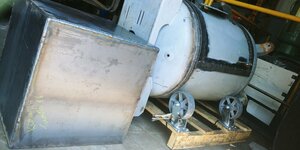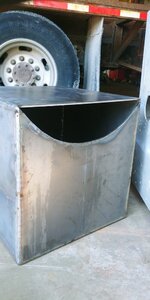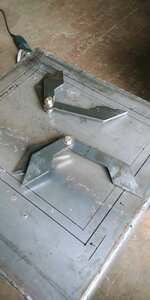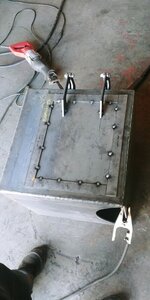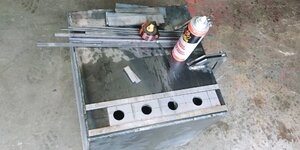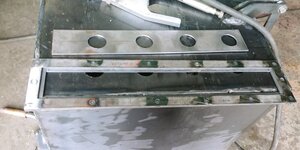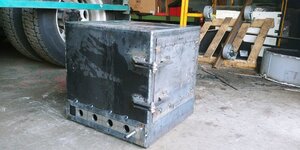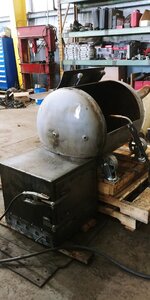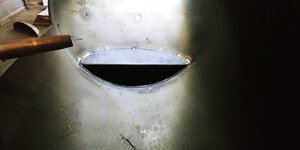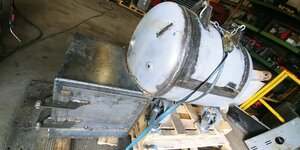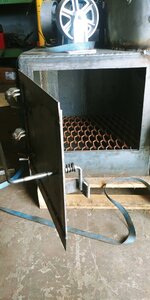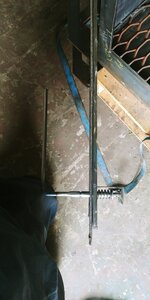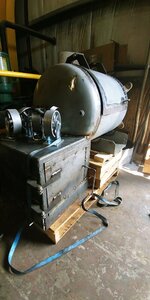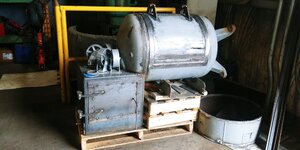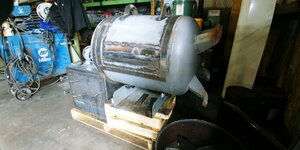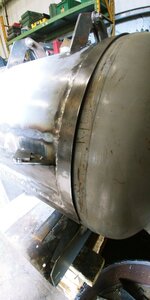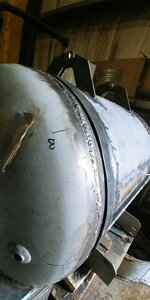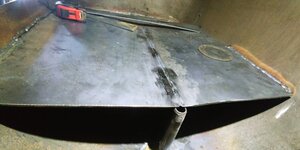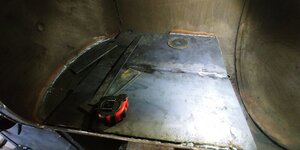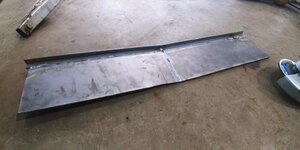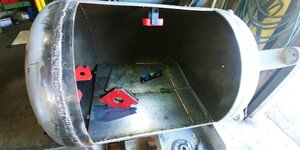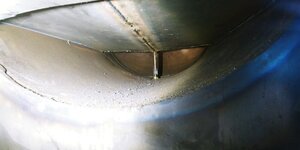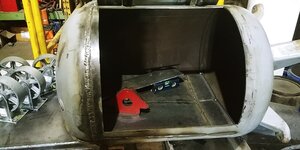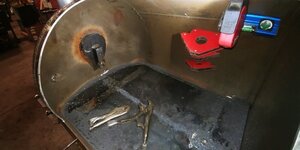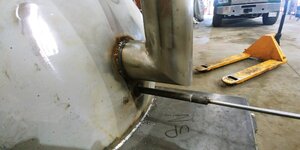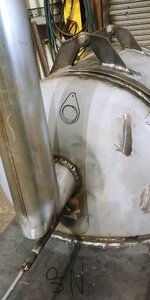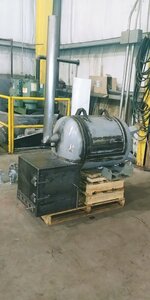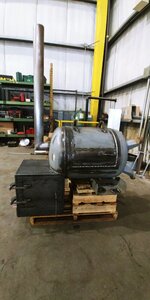I'm back again. My last post here was on September 19 of last year and I was getting some technical input from you guys on my build. It has been nearly a year, but it's now about 90% done, the rest of which is purely cosmetic.
My project started life as an 80 gallon vertical air tank and was all that I could get my hands on for a reasonable price. 80 gallon was a bit too much for my requirements. I unfortunately had to cut it down, which was no easy task but it miraculously came back together as a 63.3 gallon, and squarely at that.

Here is the final product. I've been documenting as much as possible during the build. If I had to guess, I probably have around 150 to 200 hours into it. This week I'll be bringing the barbecue home where I can begin the sealing process of the paint and the testing stages of the barbecue. I already had it cooking once, but without cross flow vents as recommended by Daveomak and without the rain cap I fabbed up. Rest assured, there will be more pictures to follow and a more detailed break down of the build, but this is just to get the thread started!

My project started life as an 80 gallon vertical air tank and was all that I could get my hands on for a reasonable price. 80 gallon was a bit too much for my requirements. I unfortunately had to cut it down, which was no easy task but it miraculously came back together as a 63.3 gallon, and squarely at that.
Here is the final product. I've been documenting as much as possible during the build. If I had to guess, I probably have around 150 to 200 hours into it. This week I'll be bringing the barbecue home where I can begin the sealing process of the paint and the testing stages of the barbecue. I already had it cooking once, but without cross flow vents as recommended by Daveomak and without the rain cap I fabbed up. Rest assured, there will be more pictures to follow and a more detailed break down of the build, but this is just to get the thread started!


